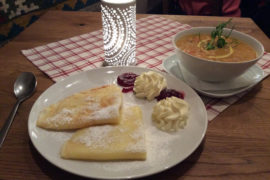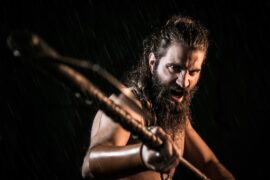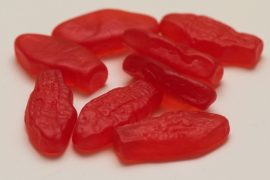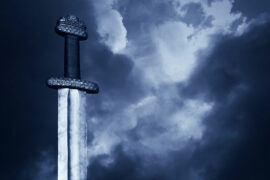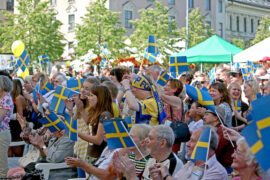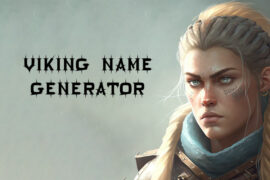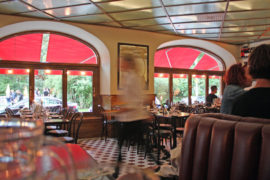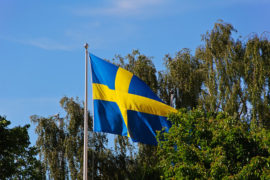Thanks to the Marvel and Disney movies, you’ve probably heard of Thor and Loki, but what do you know about the other Norse gods, goddesses and giants?
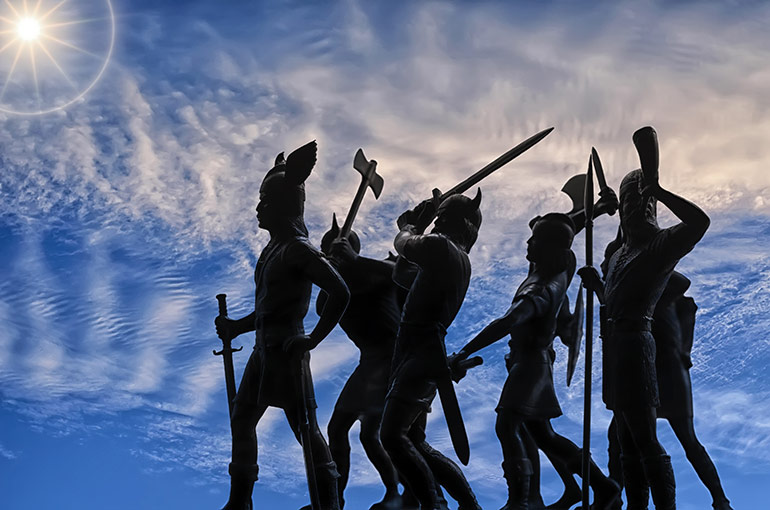
The Vikings believed in a whole range of gods, goddesses and associated characters, whose actions and personalities have become well established in Norse mythology.
Some of the Norse gods and goddesses are mainly benevolent, others… less so! But do you know how many Norse gods there are? Who are they? And what are their stories?
We’ve delved deep into Viking mythology to discover all about the deeds and misdeeds of the deities, and looked into the Norse gods and their powers.
So read on for the ultimate guide to Norse gods, goddesses and giants.
The history of Norse gods
Norse gods and the days of the week
Norse gods family tree
Do people still believe in Norse gods?
Norse gods vs Greek gods
How many Norse gods are there?
List of Norse gods
List of Norse goddesses
List of Norse giants
How do we know about Norse gods and goddesses?
Apart from word of mouth, most of what we know about the Norse myths comes from a book written by the 13th-century Icelandic scholar and chieftain Snorri Sturluson.
He combined the poems of the Elder Edda (Poetic Edda) and the Younger Edda (Prose Edda) into one book, which forms the basis of much of what we know about the Viking belief systems.
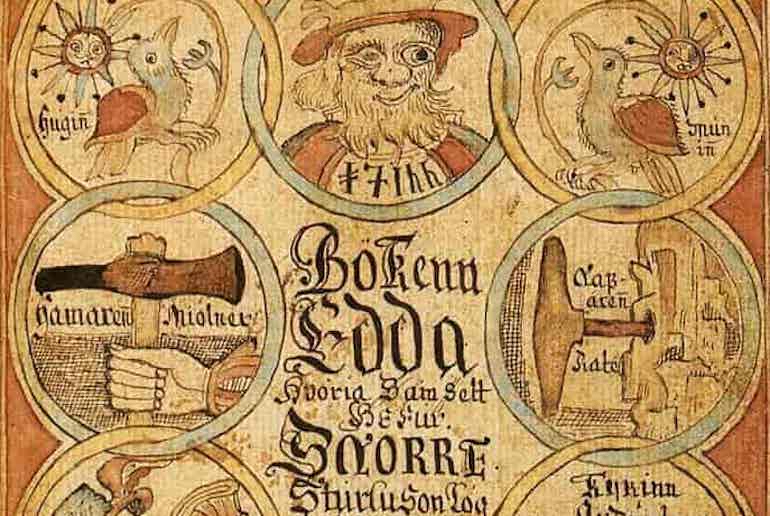
Of course, this has been added to, embellished and amended over the years through the oral tradition, while more contemporary interpretations, such as the Disney/Marvel films, have elevated formerly minor gods such as Loki into more important roles.
So much so, that the internet recently went wild with rumours about Disney trying to trademark Norse gods.
This is not strictly true, of course, since it’s impossible to trademark a god, but Disney has indeed succeeded in trademarking their version and their images of Loki, rather than the god himself.
Days of the week and the Norse gods
You may not realise how much the Norse gods still have an influence on our day-to-day life.
But if we look at the names of our days of the week, we can see that many of them originate from the names of the Norse gods.
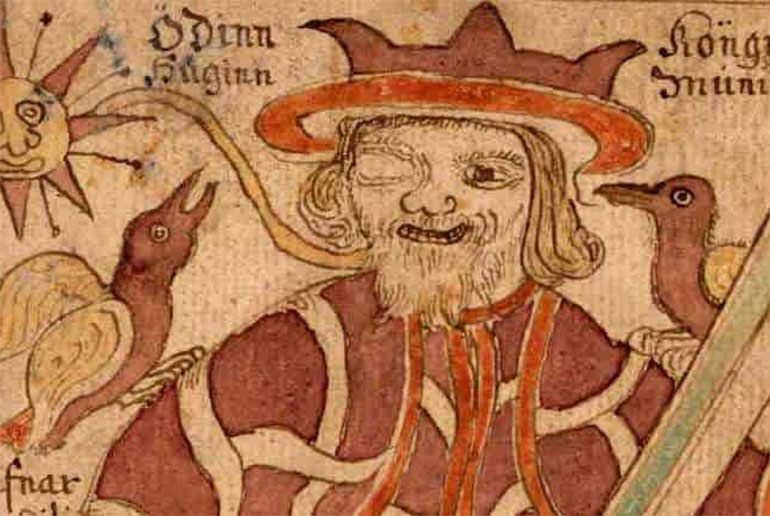
Sunday is named after Sunna, the Norse goddess of the sun, while Monday comes from “moon day”, named after the Norse god of the moon, Mani.
Tuesday is Tyr’s day, named for the Norse god of war and the law.
Wednesday is Woden’s day, named after the Norse god Odin, while Thursday is probably the best known Norse god day of the week, named after Thor.
Friday is less obvious as some sources have it originating from the Norse god Freyr, while others say it is named after Norse goddesses, Freya or Frigg.
Frigg, the goddess of love and marriage is probably the most likely origin.
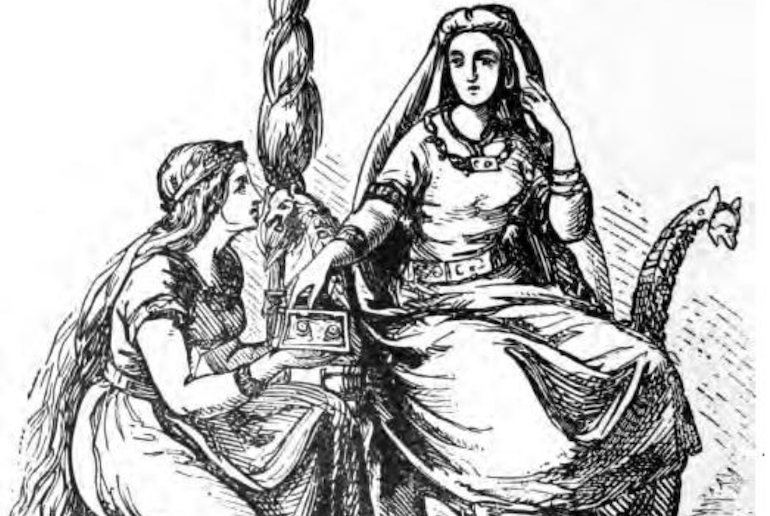
As for Saturday, it seems that this has no Norse connection, but is named after the Roman god Saturn.
Norse gods family tree
Since there are so many different versions of Norse mythology and the stories have been passed down over the generations and become corrupted, it’s very difficult to come up with a definite family tree.
It is generally agreed, however, that the main Norse gods come from two main clans, Æsir (who were associated with war and chaos) and Vanir (who were linked to fertility and nature).
For a good insight into the complex, and often very confusing, Norse gods family tree that includes giants, goddesses and an array of interesting characters, check out this clip below.
Do people still believe in Norse gods?
The simple answer is yes, they do! Whilst most of the Nordic countries have been predominantly Christian for more than 1000 years, there is still a following for Norse pagan gods and their traditional practices.
In fact, one of Iceland’s fastest growing religions is the Ásatrú faith which combines a celebration of Old Norse mythology with a strong environmental message.
At the time of writing, Iceland’s first pagan temple to be built for nearly 1000 years is currently under construction by the religious group in Reykjavik.
There’s also a belief that Viking runes can dictate the characteristics and destiny of a newborn child.
Norse astrology is also called runeology and is a bit like the zodiac system and the belief that astrological influences can dictate your life’s direction.
Try this fun quiz to find out what Norse god you are born under!
What’s the difference between Greek gods vs Norse gods?
The main differences between Greek gods and Norse gods is that Greek gods are immortal, while Norse gods are more like humans.
Norse gods share human characteristics such as hunger and they can get hurt, while the omnipotent Greek gods are more distant from man and, well, more god-like!
Greek gods tended to have a happier existence, while the lives of Norse gods were more doom-laden and dark.
That said, there are strong similarities between all the Greek gods, Roman gods and Norse gods in terms of their powers and skills, and many of the myths associated with the gods are similar in all three traditions.
How many Norse gods are there?
Since the myths of the Norse gods and goddesses have been passed down by word of mouth, it’s almost impossible to say exactly how many gods and goddesses there are.
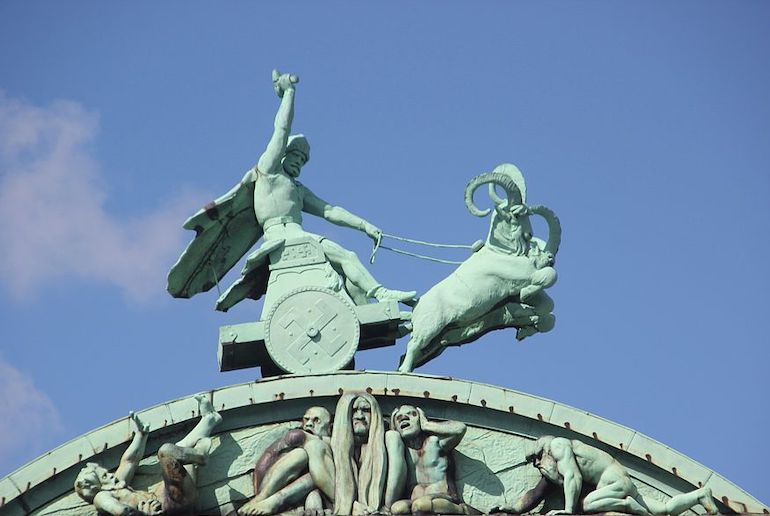
Some sources say there are as many as 66, others say that there are just twelve main gods.
And there are also a lot of giants (jötnar) in the myths too. According to Norse mythology, all the gods and goddesses originated from the giant Ymir, who emerged from primordial swamp.
And, of course, there are a whole host of supporting characters, including trolls, dwarves, an eight-legged horse and the draugrs, which were corpses that housed the spirits of dead soldiers!
So, if you’re interested in Norse pagan gods, Norse goddesses and Norse giants, we’ve compiled the ultimate list of bad-ass Norse deities and mythological creatures.
Norse gods
So, when we consider the old Norse gods, we need to look beyond the Marvel franchise and find out about some of the lesser-known gods and what they are known for.
So here are some of the most important Norse gods and their powers.
Odin
The father of all the gods, Odin is the god of wisdom, poetry and war – an interesting combination of powers!
He presided over Valhalla, the Norse version of heaven, and rode an eight-legged horse called Sleipnir who could gallop through the sky and over the sea.
Odin was a great magician and is usually depicted as an old man with only one eye – according to myth he swapped his other eye in return for gaining wisdom.
Thor
Probably the best-known Norse god, Thor is the son of Odin. He was the god of fertility, thunder and lightning and travelled around in a chariot pulled by goats.
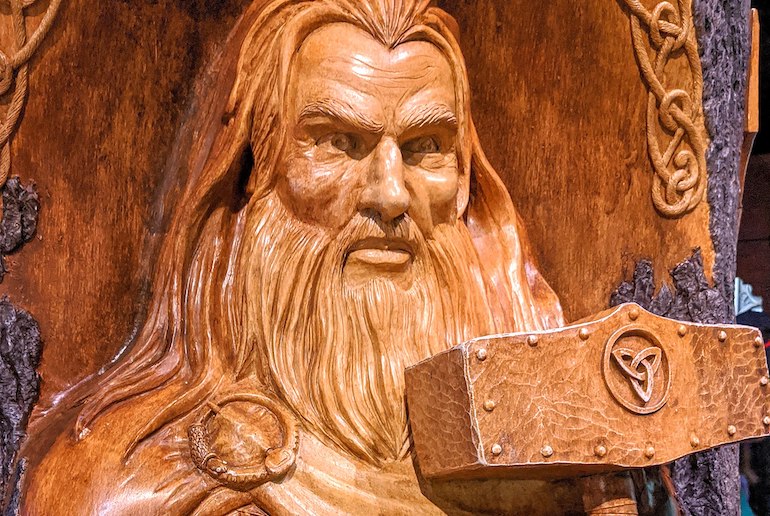
One of the strongest gods, Thor was tasked with protecting Asgard, homeland of the Æsir clan. He carried a huge hammer called Mjollnir, which was made by dwarves and was powerful enough to kill giants and snakes.
Loki
The god of trickery and mischief, Loki is a relatively minor god whose role has been bigged up by the Marvel films.
In the films, he is Thor’s half-brother and arch-enemy, but in Norse mythology he is the brother of Odin and son of the giant Fárbauti.
A cunning trouble-maker who is capable of both good and evil, Loki is also known as a god of fire.
Baldur
The son of Odin and Frigg, Baldur (or Balder) is the god of light and radiance. A much-loved, handsome, cheerful god, he is often portrayed surrounded by a halo of light.
Höðr
Baldur’s blind twin brother, Höðr is the god of darkness and winter. Höðr was tricked by Loki into killing his brother Baldur with an arrow made from a mistletoe branch.
Heimdall
Son of Thor, Heimdall is supposed to be able to foresee the future and has particularly acute senses. His eyesight is so sharp that he can see for over a hundred miles and at night, and his hearing is so good that he can hear grass grow.
Heimdall has a gold tooth, and he is tasked with watching for invaders and looking out for Ragnarok, the end of the world.
Tyr
Odin’s son and half-brother of Thor, Baldur and Höðr, Tyr is the god of law and justice. In what may seem to be a contradiction, he’s also a god of war, though it seems likely that he was mostly concerned with treaties and ways of preventing wars.
He had only one hand – the other was bitten off by a wolf – and was generally considered a good and fair god.
Vale
Vale, or Vali, was Odin’s youngest son. His mother was the giantess Rind and he is generally associated with archery and is depicted with a bow and arrow.
He is one of the gods of revenge, and he was conceived specifically in order to kill his half-brother Höðr to avenge the murder of his other half-brother Baldur. We told you this family tree was confusing!
Vidar
Vale’s half-brother, Vidar was the son of Odin and another giantess, Grid. He was completely silent and spent his time making a special boot.
It was this boot that he used to defeat and kill the wolf Fenrir to avenge Odin’s death. Vidar was one of the few gods to survive Ragnarok, and to go on to help rebuild the new world.
Norse goddesses
And, of course, the female Norse gods are just as important – if not more so – and just as capable of Machiavellian tactics as their male counterparts. Here are some of the main Norse goddesses and their powers.
Frigg
The most important Norse goddess of the Æsir clan, Frigg was the goddess of fertility and marriage.
The wife of Odin and mother of Baldur, Höðr and Hermod, she was very bright – even more so than her husband, the god of wisdom.
Her name comes from the Norse word fríja, which means “to love” and Friday is named after her – perhaps the reason why Friday was thought to be the most auspicious day of the week to get married.
Freya
Also married to Odin and the goddess of love, fertility and beauty, Freya is sometimes considered as an independent goddess and sometimes as an alternative version of Frigg.
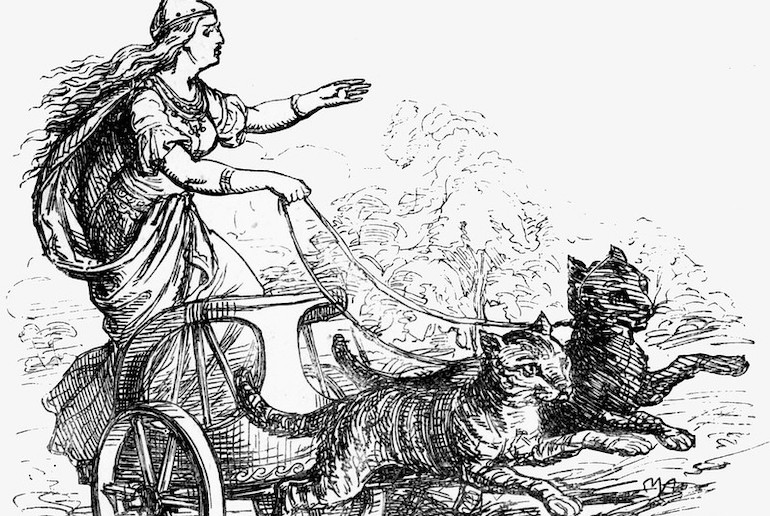
Although she has her own stories and history, it is likely that Freya is, in fact, another name for Frigg. She is often depicted as riding around in a chariot pulled by cats.
Idun
The goddess of spring and youth, Idun was married to Bragi, the god of poetry and music. Idun was the keeper of a store of magic apples that bestowed youth on anyone who ate them.
She would give the gods the apples to keep them young, until she was kidnapped by a giant and the gods all began to age. Once the giant was killed and Idun released, the gods were able to regain their eternal youth.
Sif
Despite being the wife of Thor and goddess of fertility, Sif doesn’t play a very big role in Norse myths.
Her main claim to fame is when the mischievous Loki shaves her long golden hair while she sleeps, angering Thor and causing him to hold Loki captive.
As a penance Loki goes underground to ask the dwarf craftsmen to create five magical items, including Thor’s famous hammer Mjollnir.
Hel
Loki’s daughter, Hel was the goddess of death, who presided over Helheim, the Norse underworld. Depicted as half flesh and blood and half bones, Hel decided where the souls of the Vikings’ should go once they had died.
Norse giants
Although the gods were supposed to have descended from giants, the giants were considered to be a different race from them.
However, they are just as important figures in the Viking belief system, so here are some of the main giants.
Ymir
The original source of all the gods, goddesses and giants, Ymir was the first being in the Norse creation myth. He was created when fire and ice met in the bottomless abyss of Ginnungagap, and was suckled by a cow.
A hermaphrodite giant, Ymir was the originator of all the other giants (and, ultimately, the gods and goddesses), who sprang from his armpits and legs.
Surt
Ymir’s first offspring, Surt was a fire giant, or guardian of the fire realm. He went on to fight gods of both the Æsir and Vanir clans during Ragnarok.
Aegir and Ran
The giants Aegir and Ran are the god and goddess of the sea. Although both are direct descendents of Ymir, they are also husband and wife and live in a hall below the sea.
Aegir is associated with the more benevolent aspects of the sea, while Ran is usually mentioned in relation to drownings and dragging sailors down to the watery depths. They had nine daughters between them.
Farbauti
The giant Farbauti is another of Ymir’s direct offspring. According to the original Icelandic sagas, he is the father of Loki, Helblindi and Byleistr, and his wife is the frost goddess Laufey.

The Marvel versions, however, swapped their genders and made Farbauti Loki’s mother and Laufery became a frost giant and Loki’s father.
Angraboda
Her name meaning “bringer of grief”, the giant Angraboda was the partner of Loki and mother of his three main children, Hel (the goddess of death), Fenrir (the wolf who killed Odin) and the serpent Jörmungand.
Skadi
The giant Skadi is the goddess of the wilderness, associated with archery, skiing, winter and the mountains. Wife of Njörd, the sea god, she also is said to have had two children with Odin.
Jord
Mother of Thor, and partner of Odin, Jord is a giant and goddess of the earth.
Elli
The giant Elli is the personification of old age. Despite her age and weakness, she is clever and succeeded in defeating Thor in a wrestling match.
See also:
Norse names and their meanings: the best Norse names
Nordic and Viking tattoos – examples and inspiration
All you need to know about Viking weddings

